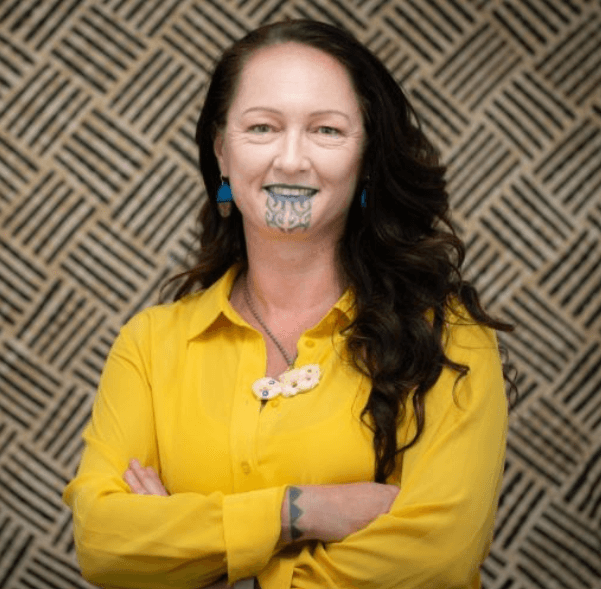

Factors that facilitate and constrain the utilisation of a Kaupapa Maori therapeutic approach with Mahi-a-Atua
Abstract Objective
To further progress Kaupapa Māori (Maori focussed) approaches within mental health services this study explored the experiences of Māori clinicians from a dedicated Māori mental health service in New Zealand, with a focus on a specific Kaupapa Māori therapeutic approach, Mahi-a-Atua.
Method
A qualitative approach was used to ascertain factors that facilitate and obstruct the utilisation of Mahi-a-Atua. In a focus group hui (Māori meeting process), eight Māori clinicians discussed their experiences.
Results
Facilitation of Mahi-a-Atua by Māori clinicians occurred through interconnectedness of a number of factors including cultural identity, relationships, wairuatanga (spirituality), kaitiakitanga (guardianship), validation of the model and the ability to co-work and engage in meaningful wānanga (learning) around the intervention. The extent to which clinicians used the model depended on their own perceived knowledge and confidence and how best able to integrate both cultural and clinical knowledge. Other constraining factors pertained to inadequate prior training, limited workforce development training and lack of adequate resourcing for specialised services.
Conclusion
This research highlights the need for Māori focussed specialised training that utilises co- working within sessions and ongoing wānanga.
Introduction
While culture is considered important to mental health1, clinical training and research institutions emphasise mainstream interventions as most helpful in practice.2 There is a lack of published literature on the operationalisation of Māori therapeutic models.3,4 In addition, it has been noted, that new graduates who work in Māori mental health may not have been adequately trained to cope in such a specialist environment.2
Dedicated Māori mental health services throughout New Zealand in the last 30 years have contributed to the emergence of Māori mental health clinicians determined to integrate both traditional and contemporary narratives when working with Māori whānau (individual service users and their families). Kaupapa Maori (Maori focussed) providers promoted further growth and development of therapeutic models consistent with the diversity of contemporary Māori world views.
Mahi-a-Atua
Mahi-a-Atua is a Māori therapeutic intervention developed in 1996 by Dr Diana Kopua (nee Rangihuna) while working as a psychiatric nurse at a Māori Mental Health Service in New Zealand.5 The intervention involves sharing pūrākau (stories) with whānau.
This approach is viewed as having immeasurable spiritual therapeutic value and gifting these ancient taonga (treasures) to those who are disconnected from them can be a bold and confident way of reinstating Mātauranga Māori (Maori knowledge systems). When Mahi-a- Atua is used the response from whānau is a meaningful and powerful connection to the narrative that shifts perspectives and provides a space for movement and healing.6
Further progressing Kaupapa Maori approaches and reinstating Mātauranga Māori within mental health services, requires research to ascertain those factors that both facilitate and constrain the utilisation of indigenous interventions. This study investigated these issues as a part of the author’s research project while a fourth-year medical student at the University of Otago in New Zealand.
Method
The present study utilised a Kaupapa Maori qualitative research approach, initiated by Māori in response to self-identified need and conducted as part of a Māori social process. Maori
language, culture, knowledge and values are at the forefront and given priority in the research approach.7 Eight experienced Māori clinicians participated as a focus group and discussed their application of Mahi-a-Atua.
Participants
The eight research participants were clinicians (psychologists, social workers and nurses) who had worked or were currently working at an urban Kaupapa Maori mental health service in New Zealand and who had identified as using or had used Mahi-a-Atua in their clinical work. The primary researcher was also a participant.
Researchers
The primary researcher had previously worked in the Māori mental health service as a psychiatric community nurse. The second researcher was a non-Māori academic social psychiatrist who supervised the research project but was not part of the focus group.
Data collection
The topics for discussion were developed by the primary researcher and circulated to participants prior to meeting. The data collection was conducted through hui - a group process. Aspects of focus group process were introduced to the hui to accommodate the need for information gathering. Participants were aware that the data would be analysed from a research perspective and had formally consented to this.
The set topics covered in the hui relevant to this article included:
a) perceived barriers to the use of Mahi-a-Atua, and
b) facilitating factors to the use of the model in the clinical setting
Analysis
The discussion was transcribed verbatim by the primary researcher and then sent to all participants for verification prior to analysis. The transcript was then coded by the researchers independently to generate provisional common themes and areas of divergence of content between participants. The two researchers then discussed the grouping of material and re- examined the data.
Results
The key themes generated from participants’ responses are summarised according to factors that facilitated and constrained the use of the approach. Key themes of facilitating factors for clinicians included identity, whakapapa (genealogy), relationships, wairuatanga (spirituality), guardianship, validation and ability to co-work and engage in meaningful wānanga (learning) around Mahi-a-Atua. The extent to which clinicians used the model depended on perceived knowledge and confidence and how best able to honour both cultural and clinical knowledge. Other factors included institutional constraints, resourcing and lack of specialised training. The names of clinicians are changed to protect anonymity.
Facilitation of Mahi-a-Atua
Identity
Participants frequently referred to the importance of cultural identity for both clinician and whānau. Clinicians observed that the practise of Mahi-a-Atua could both strengthen and challenge their own cultural identity. Learning about Mahi-a-Atua raised issues about their own identity and a desire to learn more:
It’s important to understand where we’ve come from, the journey we’ve come from, so our identity is an inclusive part of this [Mahi-a-Atua] (Rihari).
Clinicians also emphasised the need to incorporate the notion of identity into the Mahi-a- Atua approach with whānau.
So, I think sometimes it’s about getting them [whānau] to go back to their own identity and what [pūrākau] fits with them, and, why does it fit? (Keri).
Whakapapa and Relationships
Several clinicians referred to the importance of the pūrākau orokohanga (creation stories) because they hold knowledge of the earliest accounts of Māori whakapapa. They described their identity and 'being Māori' as inseparable from the approaches they used. Whakapapa introduced a special relationship between clinicians and whānau and was identified as an important ingredient for engagement with the intervention.
They’re tools but pūrākau, they’re a part of our whakapapa, our history, which is different, we have a different connection to it...they belong to me. (Tiana)
Wairuatanga (Spirituality)
There was an acknowledgement that wairuatanga is deep rooted in all aspect of Māori
culture. Sharing the pūrākau with whānau was referred to as a way of keeping the spirit of the past in the present and there was one particular clinician who spoke about the coexisting of the spiritual realm with the physical realm:
....she [whānau] had a vision of our grandmothers, who are both dead, sitting... saying “about time those two got together” (Tipene).
Kaitiakitanga (Guardianship)
Clinicians discussed a sense of responsibility and kaitiakitanga (guardianship). This carried a
responsibility to act as guardians of indigenous knowledge and ensure it is passed on to the next generation.
Wānanga and Co-working
Learning how to use Mahi-a-Atua was discussed and co-working was considered as optimal in addition to having specialist clinicians implementing it in their own practise. Clinicians ability to wānanga about the implementation of Mahi-a-Atua was identified as critical to facilitating the use of the model.
Critical mass
The need for an intervention such as Mahi-a-Atua to create momentum and a critical mass was identified as a factor that facilitated the use of this intervention:
You’ve got to get that critical mass of momentum going before you can start (Tipene).
Validation
Because Mahi-a-Atua is connected to whakapapa and belongs to both the Māori clinician and whānau, this validated the intervention. Also, identifying similar mainstream approaches validated the model:
I was trying to think about why I didn’t feel a barrier to it and part of it was because I had some theory about something different but similar to it......narrative therapy (Tiana)
Further research and publications around Mahi-a-Atua was identified as important to validate the model and facilitate the use of this intervention.
Constraints to using Mahi-a-Atua
Confidence, training, integration of clinical and cultural knowledge and resourcing
For some clinicians there was ambivalence and fear about using Mahi-a-Atua which was linked with their own confidence and perception of their knowledge and skills. A lack of training clinicians to work with Māori in a specialised Māori service was noted as well as the challenge of accepting Māori knowledge systems as ‘usual practice.’
Lack of experienced clinicians, problems with recruitment and retention of staff, large high acuity caseloads and poor resourcing were identified as obstacles. For example, in the face of pressure from a high workload, clinicians would default to mainstream practises. For some participants in this study, the polarisation of Māori approaches to clinical work was a problem and they instead tried to fit two different paradigms into the Māori approach they used.
The ongoing nature of all these service characteristics strongly undermined clinicians’ sense of being effective in using Mahi-a-Atua.
Discussion
The present study highlighted clinicians’ experience utilising Maori interventions. Key themes include clinician identity, perceived knowledge, confidence and ability to integrate two world views, wider systemic factors such as adequate resourcing and the need for specialised and Kaupapa Maori training and wānanga.
Māori clinicians are tasked to provide high quality clinical services and appropriately integrate cultural knowledge into practice. They are expected to have confident connection with their own cultural heritage that can support them to foster or lead the development of Kaupapa Maori services and competently integrate Māori models with their daily clinical tasks. This study highlighted the importance of their role in theoretical and practical development of integrating Māori models within services. They bear a cultural responsibility to reinstate a Māori worldview into mental health services and healthcare more generally.
Māori interventions are important for Māori clinicians to embody the specialist nature of their work. Clinicians’ ability to utilize Mahi-a-Atua were influenced by their own perceptions of ability, confidence and knowledge of pūrākau. At the same time, clinicians identified the inter- connectedness of Mahi-a-Atua with their own whakapapa and the whakapapa of the pūrākau, in addition to their own strength of identity. These factors need the time and space for meaningful reflection and growth through mentorship, co-working and wānanga.
Māori clinicians’ competence and confidence within this specialist field is dependent on several factors including the training received within professional schools, the allocation of funding to specialist services, professional supports, career pathways and leadership needed to drive the progression of Māori mental health services. These factors, if addressed, can progress Māori driven initiatives such as Mahi-a-Atua.
In conclusion, facilitating Mahi-a-Atua necessitates a range of individual, cultural and wider systemic factors to be meaningfully addressed. It is argued that Māori therapeutic interventions in Māori mental health, need resourcing to foster an indigenous response that includes specialised Māori training, co-working interventions with clinicians and wānanga.
References
Mental Health Commission. Mental Health and Addictions Service Delivery: Implications of emerging practise; Wellington: Ministry of Health, 2012.
Levy M. Indigenous psychology in Aotearoa: Realising Māori aspirations. Waikato University. Waikato, 2007. http://researchcommons.waikato.ac.nz/bitstream/handle/10289/3996/thesis.p.
Durie M. Mauri Ora: The Dynamics of Māori Health. Wellington: Oxford University Press, 2001.
Robertson PH. A review of work-force development literature for the Māori addiction treatment field in Aotearoa/New Zealand. Drug and Alcohol review 2006: 25, 233-239.
Cherrington L. The use of Māori mythology in clinical settings: Training issues and needs. National Māori Graduates of Psychology Symposium, Waikato 2002: pp. 117- 119.
Rangihuna D, Kopua M, Tipene-Leach D. Mahi Atua: a pathway forward for Māori mental health? New Zealand Medical Journal 2018: 131, 79-83.
Smith LT. Decolonising Methodologies: Research and indigenous peoples (2nd ed). Dunedin: Otago University Press 2012.


